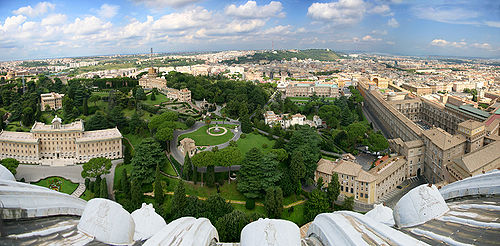| Governor's Palace | |
|---|---|
Palazzo del Governatorato in Vaticano | |
 Governor's Palace | |
 | |
| General information | |
| Type | Official residence |
| Country | Vatican City |
| Coordinates | 41°54′08.57″N12°27′04.41″E / 41.9023806°N 12.4512250°E |
The Governor's Palace (Italian : Palazzo del Governatorato in Vaticano) is the seat of the Pontifical Commission for Vatican City State. The palace is located in the Vatican Gardens behind St. Peter's Basilica. [1] [2]
